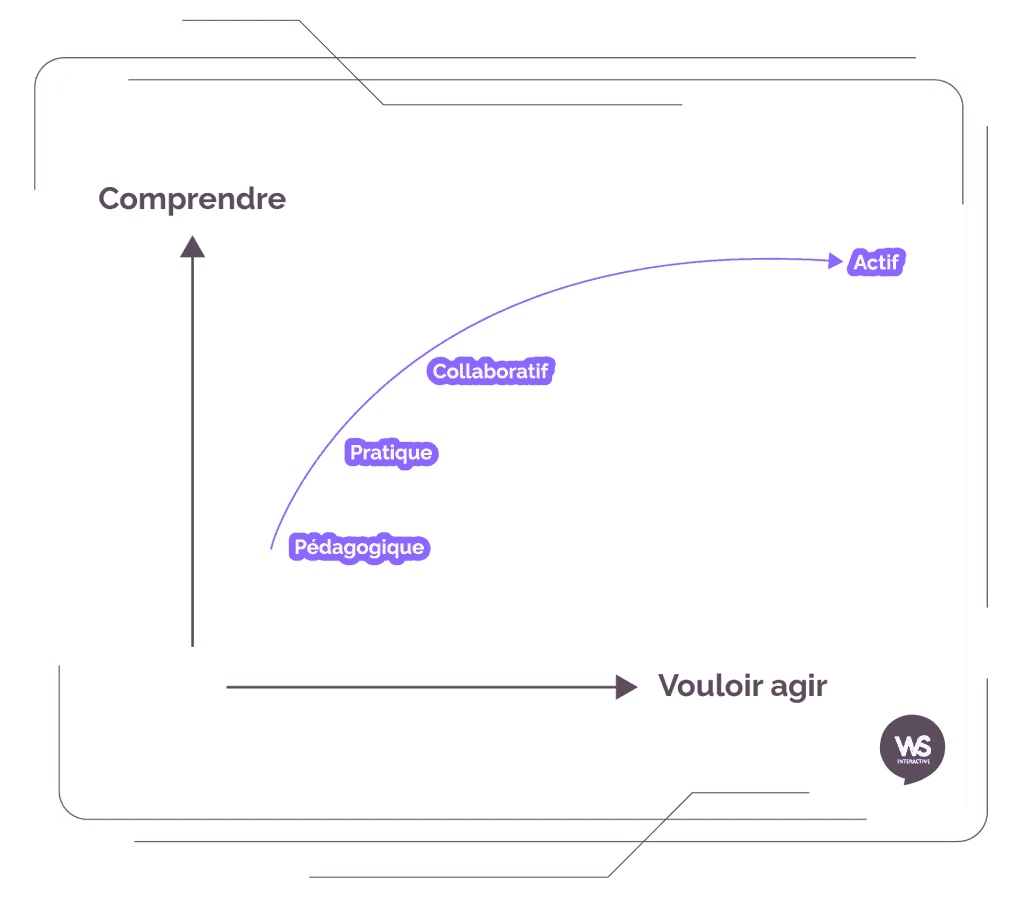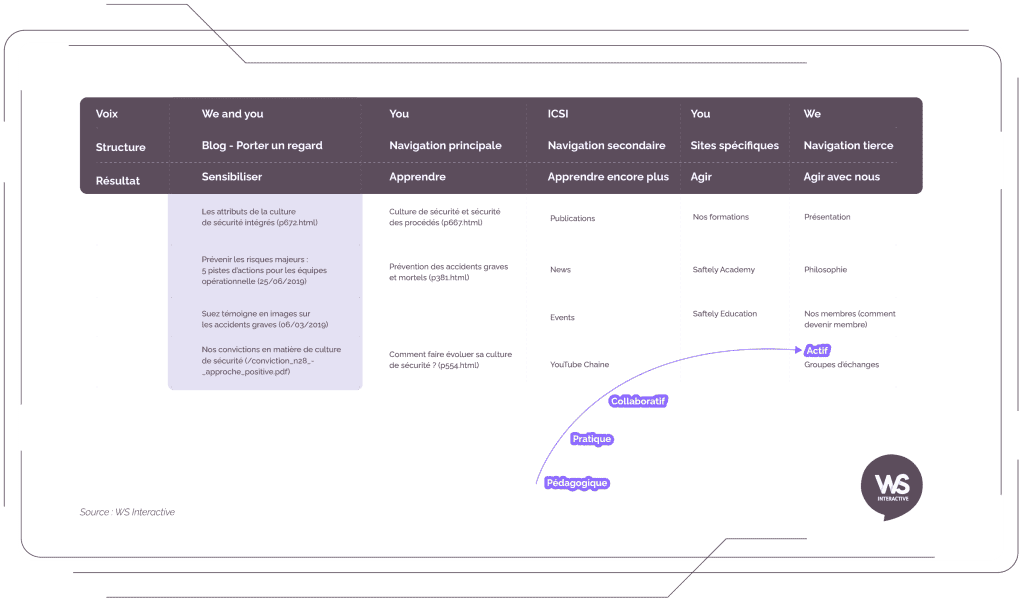
A Case Study
Content strategy is an effective approach for defining the structure and core messaging of large B2B and B2C websites. It is especially beneficial for organizing extensive websites for associations and institutions. Given the multifaceted nature of these organizations, which often prioritize multiple levels of activity, content strategy ensures a proper hierarchy that maintains the importance of all departments.
This case study explores how we organized and conducted workshops to create the Icsi website, which has been live since 2020.
Content Strategy Workshops with Icsi
Icsi, the Institute of Industrial Culture and Safety, promotes a better safety culture in businesses and factories. In 2019, Icsi approached WS Interactive to revamp their outdated website and provide a user experience that met the high standards expected by their members. Additionally, they needed an e-commerce platform to showcase and sell their training programs, all in three languages.
Given the extensive information to be published, Icsi recognized that WS Interactive’s content strategy workshops would help them provide better structure and governance for their content.
Overall, three days of workshops were organized between WS Interactive and Icsi, involving ten subject matter experts from Icsi.
Conducting the Workshops
The three-day workshops were designed to facilitate collaboration across all team levels.
- Workshop One: Understanding the objectives of each department
- Workshop Two: Presenting and discussing user needs in relation to Icsi
- Workshop Three: Recommendations and final presentation
Workshop One: Understanding the Objectives
In large institutions or associations, every department head has specific needs. However, whose needs are most important? While the democratic nature of these organizations often allows everyone an equal voice, the web requires a clear order. This is particularly important when users view your website on a mobile device, where information is presented piece by piece. The first piece of information displayed will be considered the most important, even if it is not the case for the organization.
While this can lead to disagreements, organizations understand that a decision must be made. The first workshop allows us to explore each department’s objectives with the website and their target audience. These interviews can be conducted collectively or individually, depending on the site’s size. Often, we use a combination of both approaches, starting with a quick discussion with each subject matter expert before bringing everyone together for a round-table discussion to highlight common interests and identify standalone areas.
The workshop makes a crucial point: the website is for the organization’s users. Therefore, our discussions focus on which information makes the most sense from a user perspective. While different users may have different interests, these can often be grouped under similar taxonomies or organized in a way that all subject matter experts can agree on.
After these interviews, the agency conducts research to prepare for Workshop Two, which focuses on the website’s structure.
Measuring performance on social networks
Workshop Two: Structuring the Website
A website is only as good as its structure. The user experience depends entirely on how the information is organized, and the UX design team can only create an effective design if the structure aligns with user needs. Structure is not limited to the sitemap; it also includes the zoning for key pages such as the homepage, product pages, solution pages, and blog articles.
Workshop Two is presented to showcase the thought process behind determining the correct structure. By conducting valuable research, including benchmarking and SEO trend analysis, we gain insight into the personas’ mindsets and their objectives. The user journey is especially helpful here, allowing us to understand how users approach the website: where they are coming from and what content they need to read to reach the final destination (whether it’s a contact form, purchase, or another call to action).
By this stage, we have already applied approaches for the sitemap and taxonomies, such as card sorting or the top-tasks method defined by Gerry McGovern. Additionally, the agency has analyzed and categorized content pieces.

The key here is not to go into too much detail yet but rather to classify the stages at which users engage with your content. For Icsi, we identified a clear communication pattern for most of their personas:
Pedagogical → Practical → Collaborative → Active
Thus, Icsi’s content needed to be structured in that order, with call-to-actions following the same sequence. Directing users from pedagogical information to active information without a thorough understanding of the benefits may not be effective. This doesn’t mean agencies can’t use tactics to provide shortcuts for returning visitors, but for new visitors, clarity is crucial. It’s often better for users to click and scroll more if it means they fully understand the content. This might lead to fewer choices displayed on a screen but makes it easier to navigate to the desired destination.
Workshop Three: Recommendations
This general classification allows us to align the sitemap with the content easily. Each piece of content will find its proper place and appropriate voice.

Recommendations should include any SEO-related keywords to emphasize and style guidelines to follow. Our workshops also cover writing excellent content, which is the next step after building a great sitemap. Once all subject matter experts are on board with the strategy, we provide content templates to ensure coherent and consistent content that resonates with the target audience.
Workshop Results
Since the website launched almost four years ago, traffic has consistently increased, and customer satisfaction remains high. While websites are judged on countless factors, we can confidently say that beginning the project with content strategy workshops leads to a more user-friendly experience, ultimately resulting in happier users and content providers.
For further reading, check out the content strategy case study for Long An Port. The author also provides in-depth analysis on many content strategy topics.
Start Your Project with a Content Strategy Workshop
Interested in having an expert content strategy workshop for your organization? We offer content strategy packages starting at the half-day according to the need. Contact us. 😉